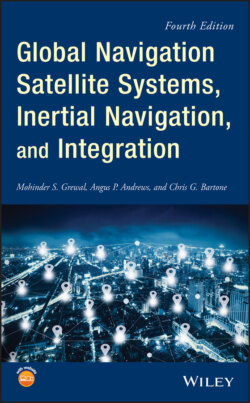Читать книгу Global Navigation Satellite Systems, Inertial Navigation, and Integration - Mohinder S. Grewal - Страница 144
3.7.1 Laboratory Testing
ОглавлениеLaboratory testing is used to evaluate sensors before and after their installation in the ISA, and then to evaluate the system implementation during operation. The navigation solution from a stationary system should remain stationary, and any deviation is due to navigation errors. Testing with the system stationary can also be used to verify that position errors due to intentional initial velocity errors follow a path predicted by Schuler oscillations (‐minute period, described in Chapter 11) and the Coriolis effect. If not, there is an implementation error. Other laboratory testing may include controlled tilts and rotations to verify the attitude estimation implementations, and detect any un‐compensated sensitivities to rotation and acceleration.
Additional laboratory testing may be required for specific applications. Systems designed to operate aboard Navy ships, for example, may be required to meet their performance requirements under dynamic disturbances at least as bad as those to be expected aboard ships under the worst sea conditions. This may include what is known as a “Scoresby test,” used at the US Naval Observatory in the early twentieth century for testing gyrocompasses. Test conditions may include roll angles of and pitch angles of , at varying periods in the order of a second.
Drop tests (for handling verification) and shake‐table or centrifuge tests (for assessing acceleration capabilities) can also be done in the laboratory.
